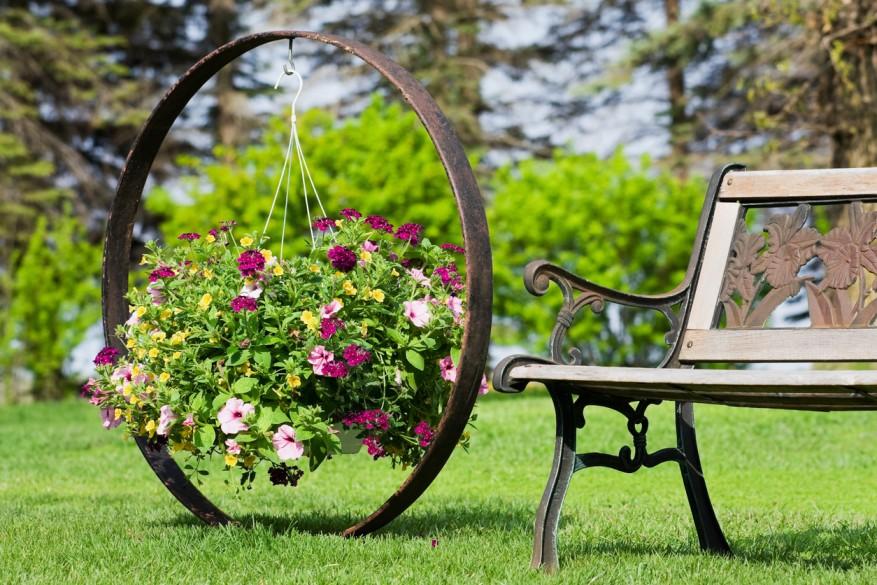Our Handy Guide to Sustainable Furniture Materials for Your Home
Out with the animal-based materials and in with the renewable, ethical ones.
Updated Aug. 6 2024, 1:14 p.m. ET

Cultivating your living space with sustainable materials is a fun, refreshing, feel-good exercise in sustainable living. There are many ways to furnish an eco-friendly home with thoughtfully chosen items of sustainable materials.
Sadly, unsustainable materials like foam, virgin polyester, and animal materials like wool, down, suede, and leather are too often used for furniture. There are other, more sustainable materials available to revitalize your home.
Keep this Green Matters guide handy and return to it often as you consciously choose animal-byproduct-free, eco-friendly, sustainable, and renewable materials to keep your home a happy and healthy haven.
Bamboo furniture provides style and sustainability to your living space.

According to the blog at Ecobnb, bamboo is considered the "ultimate sustainable material for furniture," and it's hard to disagree. We know that bamboo is eco-friendly, fast-growing, and sustainable. Bamboo provides excellent durability for cutting boards and comfortable mattresses. In many cases, bamboo is also more affordable than other materials.
As you shop for the perfect bamboo piece for your home, make sure your bamboo furniture is certified through the Forest Stewardship Council.
Recycled wood can provide a sustainable, rustic, elegant decor option.

Whether you have the know-how and energy to restore a piece of wooden furniture or find a beautiful recycled wooden piece from an eco-friendly furniture company, recycled wood is a great material for your upcycled furniture, according to Ecobnb.
You'll have the satisfaction of contributing to the end of consumer habits that condone deforestation, and you may end up with a beautifully elegant furniture piece with fascinating stories to tell.
Recycled metal saves planetary resources and gives a great vibe to your home.

Incorporating recycled metals like aluminum and steel into your furniture, per Fibrenew, saves the planet from even more depletion of raw materials. Regardless, if you're sourcing recycled metal materials yourself or shopping from a sustainable furniture company, keep an eye out for an SCS Global Services certification or similar recycled metal certification to ensure your purchase is ethical.
Cork can be sustainably and creatively crafted to look like other materials.
The look of raw cork might not necessarily be the vibe you're looking for in your home. According to cork product manufacturer HZCORK, recycled cork can be processed to mimic the appearance of other materials. For example, cork can be charred to resemble a wooden table, processed to mimic the feel of a polyester or suede couch, and even manipulated into a vegan leather material.
As you shop for furniture made from sustainably sourced cork, be on the lookout for products certified through the Forest Stewardship Council or the Programme for the Endorsement of Forest Certification Schemes.
Leather made from mushrooms is the way of the future.
Savvy sustainability-minded companies have already turned to materials like banana-based leather or cactus-based leather for suitable vegan alternatives. Per The Conversation, the idea for mycelium (mushroom) leather has already been patented for about a decade.
MycoWorks has already partnered with luxury furniture maker Ligne Roset for a vegan mycelium-based leather product, and the future looks bright for consumers seeking this fascinating industry innovation.